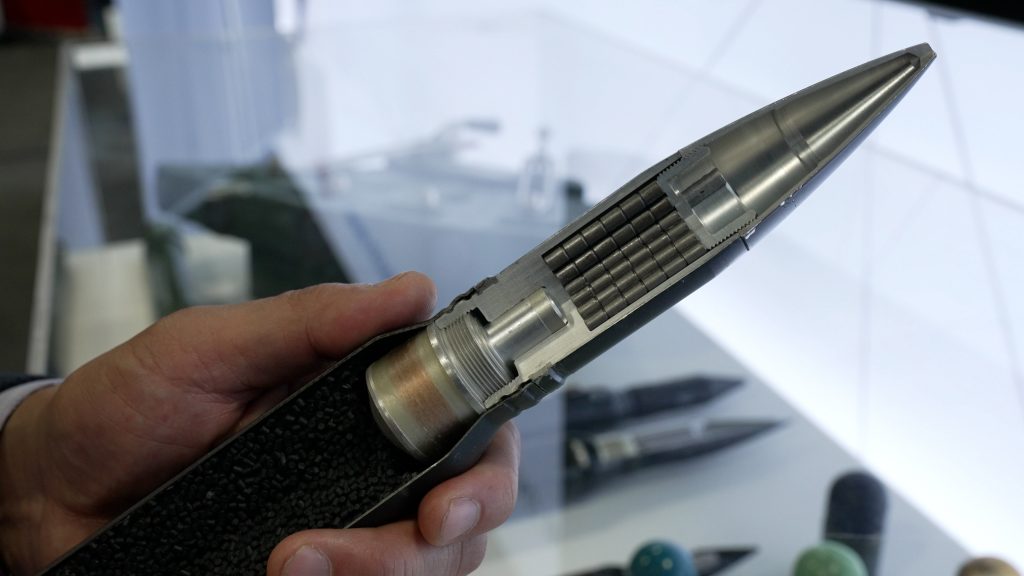Exploring the strategic edge of airburst munitions: Weapon of the Week

As warfare evolves, so does the need for precision and adaptability in weapons systems. American Rheinmetall is developing advanced airburst munitions designed to meet the demands of modern combat, offering solutions for both the U.S. Army and Navy.
Joe Chan, senior vice president of business development and sales at American Rheinmetall Munitions, recently discussed the company’s work on airburst technology, including a new 40 mm round for the Army and a 30 mm variant for the Navy.
Traditional 40 mm grenades rely on point-detonation fuses, which require direct impact to be effective. While suitable for open targets, they struggle to neutralize threats hiding behind cover. Chan said Rheinmetall’s new airburst round addresses that limitation.
“What the Army is trying to do is develop a 40 mm round that can explode above a target where it’s hiding,” Chan said. “We’re programming the fuse to detonate at a specific point in space by calculating range and converting it into time of flight.”
What makes this round different?
The round uses infrared signals transmitted from the weapon’s barrel to communicate with embedded LEDs on the fuse. These signals program the round mid-launch, allowing it to detonate at the precise moment needed to strike concealed targets.
“This is highly effective,” Chan said. “It allows soldiers to engage threats behind walls, berms or other cover without needing to penetrate those obstacles directly.”
While the company optimized the Army’s airburst round for ground combat, the Navy is exploring a different application. Rheinmetall is developing a 30×173 mm airburst round for naval platforms, specifically designed for counter-air operations, including defense against unmanned aerial systems (UAS).
“This round is being fired from a large cannon and is optimized for counter-air,” Chan said. “It contains 168 tungsten sub-projectiles that are ejected in a forward cone upon detonation.”
Because the round spins in flight, the resulting fragmentation pattern forms a spiraling cone of destruction. Chan demonstrated the effect using a scaled-down, 3D-printed target array, noting that the full-size pattern is four times larger and highly effective against aerial threats.
“The frag pattern is a result of the round’s rotation,” he said. “It creates a dense spread of tungsten fragments that can disable or destroy incoming drones and other airborne targets.”
Who could use the munitions?
Both munitions are still in development, but Chan emphasized their potential to fill critical gaps in battlefield capability. The Army’s round offers enhanced lethality in urban and covered environments, while the Navy’s variant provides a scalable solution for ship-based air defense.
“These are the right tools for the job,” Chan said. “We’re working closely with the services to ensure these munitions meet operational needs and can be deployed effectively.”
American Rheinmetall’s work reflects a broader trend in defense innovation: building smarter, more adaptable weapons that can respond to the unpredictable nature of modern warfare.
Access the full Weapons and Warfare episode here.
Access all Weapons and Warfare podcast episodes here.





